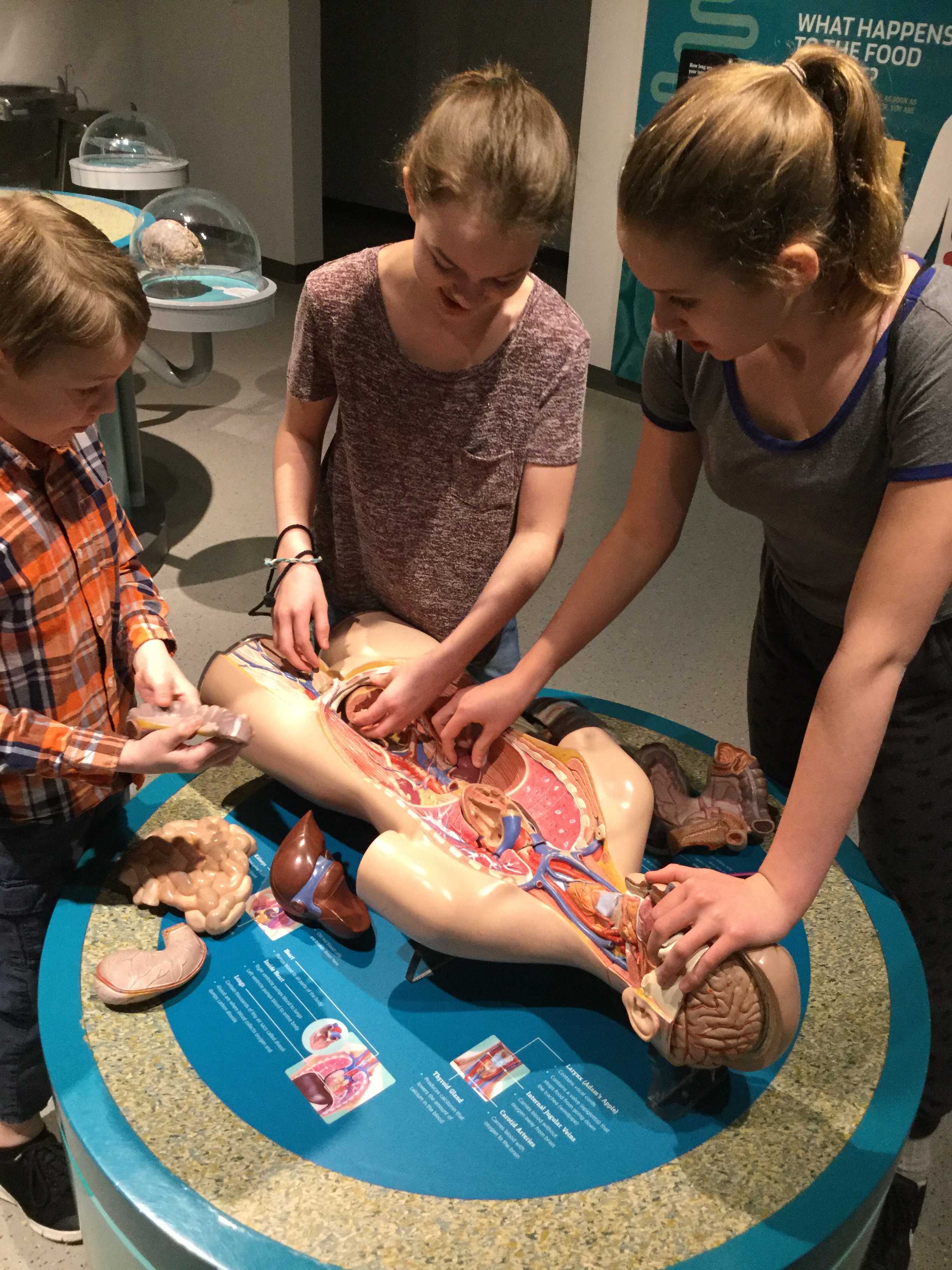I went to a homeschool conference last spring, and I didn’t buy a thing.
(Turns out I went with three guidelines for choosing curriculum.)
So what does my lack of purchasing tell you about me?
Therefore, I must be…
a. No longer homeschooling.
b. Already in possession of enough books to occupy a public school library.
c. Homeschooling for a very long time and have learned that I just don’t need it all.
C it is! (Oh, and obviously also B, cause I’ve been homeschooling for ten years).
One of the most common questions I’m asked about homeschooling: “Where do you get the curriculum?” The answer: the same place everyone gets stuff, book stores, online, the library, or friends.
Teresa Wiedrick, author of Homeschool Mama Self-Care: Nurturing the Nurturer
So what are my 3 guidelines for choosing a curriculum?
1. Ask about favourite homeschool curriculum on a homeschool Facebook page will garner oodles of opinions.
Word of mouth is a powerful sales agent.
But know that there is no perfect curriculum. Even if a ton of families love something, it doesn’t mean that you will. You might, but you might not. Your kids might, but they might not.
Take word of mouth suggestions with a grain of salt.
2. Homeschool curriculum is as individualized as the families they educate.
What you like might not be what your friends like or what your kids like, or even what just one of your kids likes. Lots of experimenting is involved. If you’re not eager to spend money, then borrow, lend, go to the library, a used book store, or trade resources.
3. All curriculum gets boring eventually.
Even the most exciting curriculum gets boring by the middle of November when you realize you don’t like it as much as you first thought, or by the beginning of February when everything gets boring.
So try not to buy stuff. (ps this is why you won’t see me promoting curriculum typically, because I think any resource you like can be a useful tool, and there is no perfect tool found under the sun!)
And if you no longer like it, consider practicing sending it on to someone who does. Because you want to enable happiness and play and curiosity and imagination your goal!
4. Be thee encouraged: the perfect curriculum will not be found. It is not a treasure to be discovered, because it doesn’t exist.
If there is no magical curriculum, how do you choose a curriculum? If you’re not locked into a prescribed program of learning by your state or provincial government, I suggest three principles for choosing a curriculum…
fyi Remember that curriculum can teach you how to use it or understand the subject. Now that is useful.
5. Follow your kids’ interests.
The easiest way to get someone engaged in writing or math or any subject whatsoever is to pursue their interests.
Do you have a kiddo Minecrafting? There are writing prompts for that. Also, there are math games for that. Hey, and there are history books used in conjunction as building prompts. There’s even an online school for that!
Does your kiddo like mixing stuff together? (Watch out kitchen!) Chemistry experiment books and experiment sets and slime sets abound for such a purpose. We have purchased this one twice and used it three times.
Your intention by following their interests is to fuel their imagination, encourage curiosity, and play!
6. Find an Usborne book for that.
If I had to sell anything, it would be Usborne products, because they would sell themselves. Their format, vocabulary, and illustrations are excellent entry resources for any subject area from chemistry to Shakespeare, Roman history to US presidents.
7. Does your child have an interest in history?
- Have you seen the Kingfisher Encyclopedias?
- The Usborne On-Line Encyclopedias?
- \Have you tried the Horrible History DVD series?
- What child can resist those historical absurdities?
- Have you tried an Ancient Egyptian party?
8. Follow your interests.
Who says homeschooling needs to focus only on the interests of the child?
Homeschooling can be a family affair.
When a parent shares a love of a topic, that child will remember and learn.
9. If you’re passionate about an activity, share it with your kids.
Do stuff you like to do with your kids. And call that homeschooling.
For years, I included my kids in spring planting. They planted and harvested oodles of carrots in their very own garden patch by September. Digging in the dirt and finding earthworms and pill beetles was a delight. Understanding soil quality and growth habits, compost development, companion planting, and squash flower fertilization: no one would have taught them these skills if they hadn’t joined in on my interests.
My husband’s interests include…
- NFL and MLB,
- Canadian and American politics,
- Broadway Theatre
- and presidential history has been infused in my children.
10. At bedtime and breakfast, in transit, or at the campfire, our kids have had all manners of discussions with their dad.
He says, “You need your own savvy, and then share your savvy with your kids, and let your kids really do things with you.”
No matter the interest, you can spend a few minutes a day engaging your topics of interest. When they watch you passionately engaging in your interests, they will see that learning continues throughout a lifetime.
11. Trust that the way your kids like to learn is the right way to learn.
This will greatly influence your choice of curriculum. And frankly, make your life easier. Why? Because it isn’t a forced approach to learning.
I was primarily taught in the lecture, study, test, and regurgitate approach. (Most of us were.) These modes have their place, but they’re not the only place. Being told something, recording notes on paper, reviewing the notes, and being quizzed on it have their place but so do discussions, reading, learning practical skills, and many other approaches.
Learn more about child-led learning here.
12. There are a thousand ways to educate (or maybe 7 billion).
We have all been taught we have preferences in learning styles, but Tesia Marshik believes the notion of learning styles is a myth. Maybe we learn in many modes.
13. So much to learn about learning.
Tesia Marshik makes me think: How do we learn then?
Barbara Oakley wrote a fantastic book on learning: Learning How to Learn. (A book I read with my kids during readaloud time.) She gives insight into how we learn to learn.
Learning about learning helps me learn how my kids might be learning. (Um…but it’s true.)
14. Learning about learning might be more important than time spent perusing curriculum choices.
How does all this influence our curriculum choices?
You will know by watching your kids, asking your kids, and trusting your instincts.
Continue to learn about their learning: follow your children’s interests, follow your interests, and learn how they learn.
So whether you attend a homeschool conference, or not, you can use these guidelines for choosing a curriculum for a satisfying homeschool.

Reimagine your Homeschool Workbook
Introducing the Reimagine Your Homeschool Workbook! Reflect on the past year, assess what worked and what didn’t, and build the homeschool you truly want. Evaluate curriculum, routine, philosophy, and plan for the future. Get renewed inspiration and fresh ideas.
People also ask:
- what to ask yourself to choose the best curriculum for your homeschool
- choosing the right homeschool curriculum
- Use the Deschool your Homeschool journaling workbook for freedom & individualization.
- when you buy new homeschool curriculum: 5 clever suggestions
- 🎧 Reimagine your Homeschool: Podcast Season #6 🎧
- how to choose the best curriculum for your homeschool
- What is the Reimagine Your Homeschool Group Coaching?
- Do you offer one-on-one coaching? Why, yes I do!

